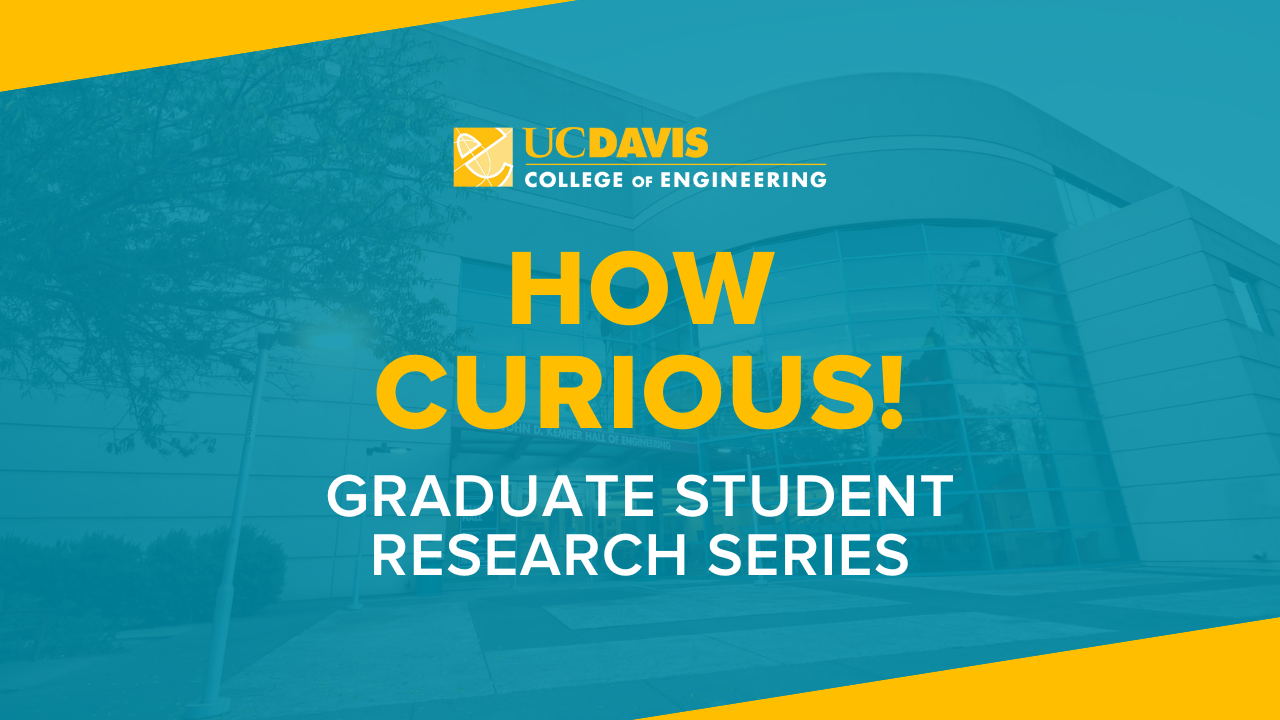
Event Date
How Curious! offers graduate students in master's and Ph.D. programs in the College of Engineering an opportunity to present their research findings and engage in scholarly discussions with their peers and faculty members. The goal is to foster collaboration, encourage intellectual exchange and support the professional development of our graduate student community.
Presenters
Man Yu, Electrical and Computer Engineering
Presenting: A Revised Switching Scheme of SAR ADCs
Analog-to-digital converters (ADCs) take analog voltage signals and convert them into digital signals so computers can process the signals digitally. Many applications require low power conversion, sufficient sampling rate, and high resolution. To target low power and high resolution, successive approximation register (SAR) ADCs can output multiple bits per conversion cycle with only one comparator, in contrast to other ADC architectures that outputs one bit per comparator. The SAR ADC stores its evaluated bits on capacitors by switching scheme techniques. This presentation focuses on monotonic switching, so only one capacitor changes voltage after an evaluated bit. Many comparators for SAR ADCs are designed to have PMOS transistors as inputs and monotonic switching scheme makes the input common mode voltage converge to low voltage. However, to make fast comparators, NMOS as inputs are preferred, as electron mobility dominates hole mobility, allowing the same speed for with smaller transistor sizes. However, a monotonic switching scheme that converges common mode voltage to low voltage is not feasible as the least significant bits could be evaluated incorrectly, as NMOS operate poorly in subthreshold in comparators. Therefore, a monotonic switching scheme that converges common mode voltage to high voltage with NMOS input comparators is more preferred. Furthermore, a pipelined SAR ADC architecture can output double or triple the bits while relaxing the speed requirement.
Bio: Man Yu is a second-year M.S. student in the Department of Electrical and Computer Engineering, advised by Professor Rajeevan Amirtharajah and Dr. Panagiotis Zarkos from Lawrence Berkeley National Laboratory. Their research focuses on a design of a low power analog-to-digital converter. Man is also broadly interested in analog circuits in engineering music, radio frequency integrated circuits, and digital design. Their research will benefit national lab research across the nation.
Francisco Jackson, Mechanical and Aerospace Engineering
Presenting: Modeling Wing Morphology of the Red-Tailed Hawk (Buteo Jamaicensis)
Birds can perform maneuvers beyond the capabilities of modern aircraft. This difference in maneuverability may come from birds being able to morph their wings in different ways than aircraft. Studies have shown that the range of motion of the wing can be replicated using simple joint types. However, the complexity of these biological joints is challenging to capture with these reduced-order models due to varying translational and rotational capabilities in each joint. This leads to the question, what kinematic model best represents true bird wing morphing? Here, we addressed this question by developing a biomechanically accurate model of an avian wing using motion capture to analyze individual bone motion and joint types for the red-tailed hawk. We performed quantitative measurements with an Optitrack motion capture system to capture bone motion for a base in the keel of and the four major bones: the humerus, radius, ulna, and carpometacarpus. We employed a data-driven kinematic analysis to extrapolate a kinematic model of the wing that will provide a foundation to derive the equations of motion. These extracted equations of motion will describe wing-joint kinematics across a biologically relevant range of motion and provide constraint functions for our proposed joint types. In all, our biologically informed kinematic model will build upon the existing foundation for bio-inspired design for aircraft maneuverability by providing a quantified insight into avian wing morphing.
Bio: Francisco Jackson is a first year Master's student in the Department of Mechanical and Aerospace Engineering, advised by Professor Christina Harvey. Their research focuses on bio-informed wing morphology and dynamic stall.
Calum Shelden, Electrical and Computer Engineering
Presenting: How to levitate two-dimensional magnetic materials using repulsive Casimir forces
We present on the potential for quantum levitation to enable a 2D magnetic material to float above a metal plate . Two perfect conducting plates placed parallel in a zero-Kelvin vacuum will strongly attract as a consequence of the vacuum’s zero-point energy, first theorized by Hendrick Casimir. At a separation of 10nm, the Casimir force can exert an attractive pressure of ~1 ATM between objects. As a result, nano- and microscale devices suffer from their surfaces being pulled together and sticking, destroying the devices’ functionality. To mitigate this issue, we must engineer systems to reduce, eliminate, or even reverse this force. T. H. Boyer predicted a repulsive Casimir force between a perfect conducting plate and an infinitely permeable (magnetic) plate; however, generating repulsion in real-material systems is nontrivial. We thereby study how to tune the properties of a magnetic plate facing a gold plate to push repulsion into a potentially measurable regime [1]. We find that there is a delicate interplay between the thickness and permeability; however, it appears 2D magnetic materials are a promising class of materials for generating measurable repulsive Casimir forces. Further, repulsion could even be used to levitate such a material above a gold plate. [1] C. Shelden, B. Spreng, and J. N. Munday, Phys. Rev. A 108, 032817 (2023).
Bio: Calum is a fifth-year PhD candidate in the Electrical and Computer Engineering department, advised by Prof. Jeremy Munday. His research focuses on the simulation and measurement of repulsive Casimir forces.
